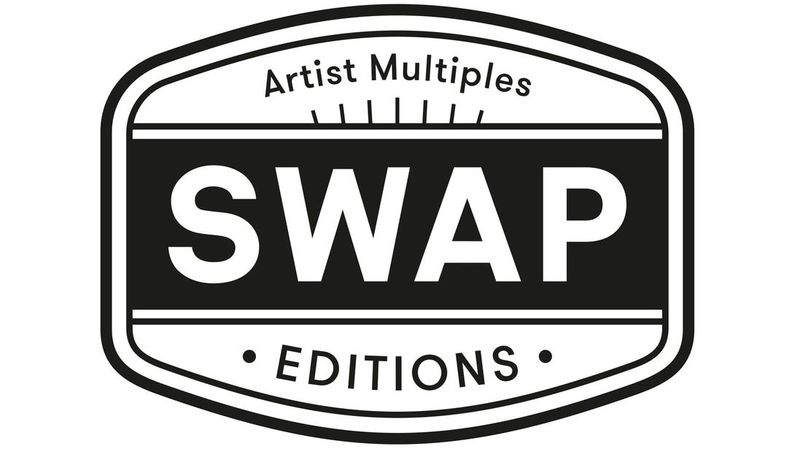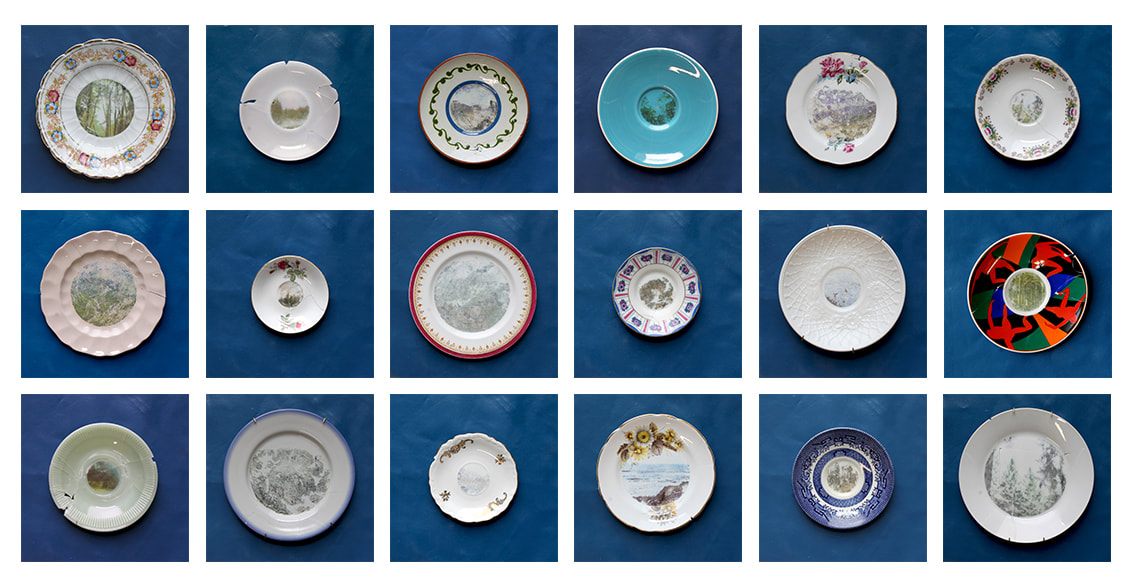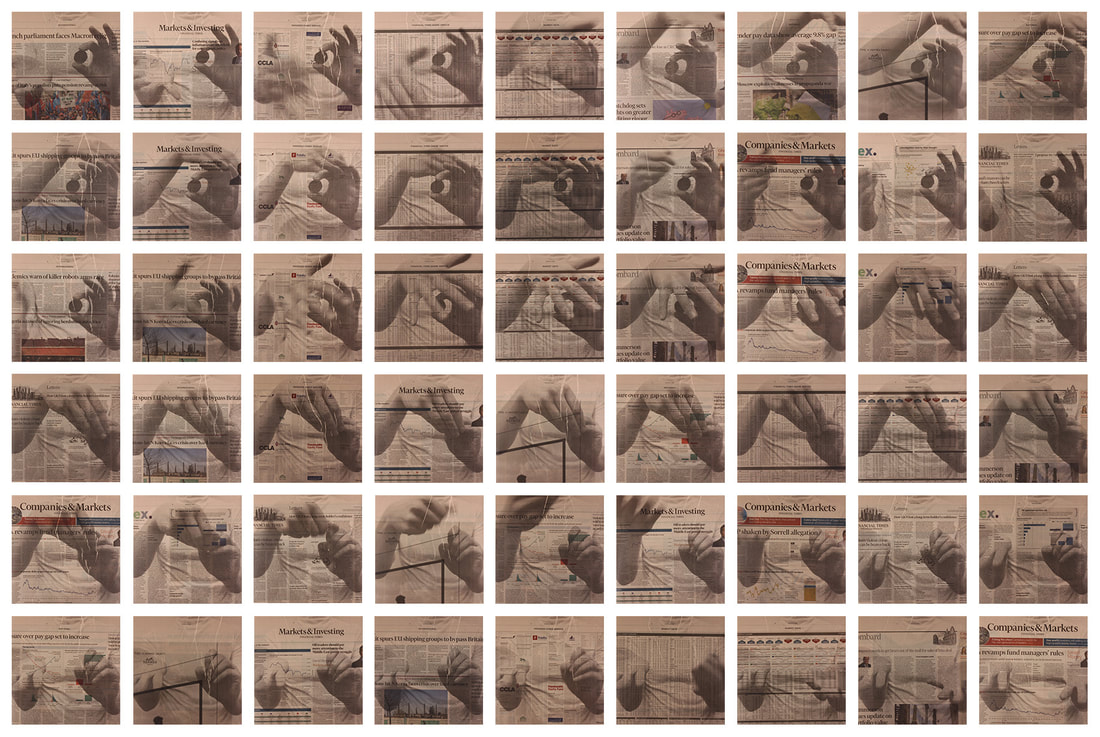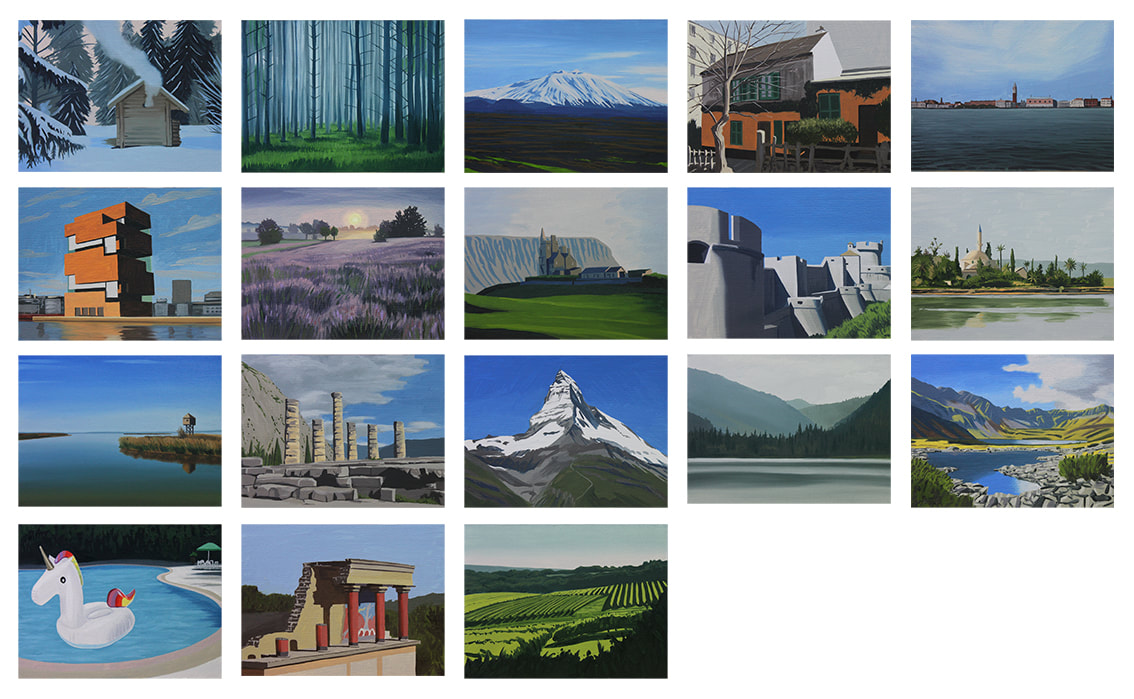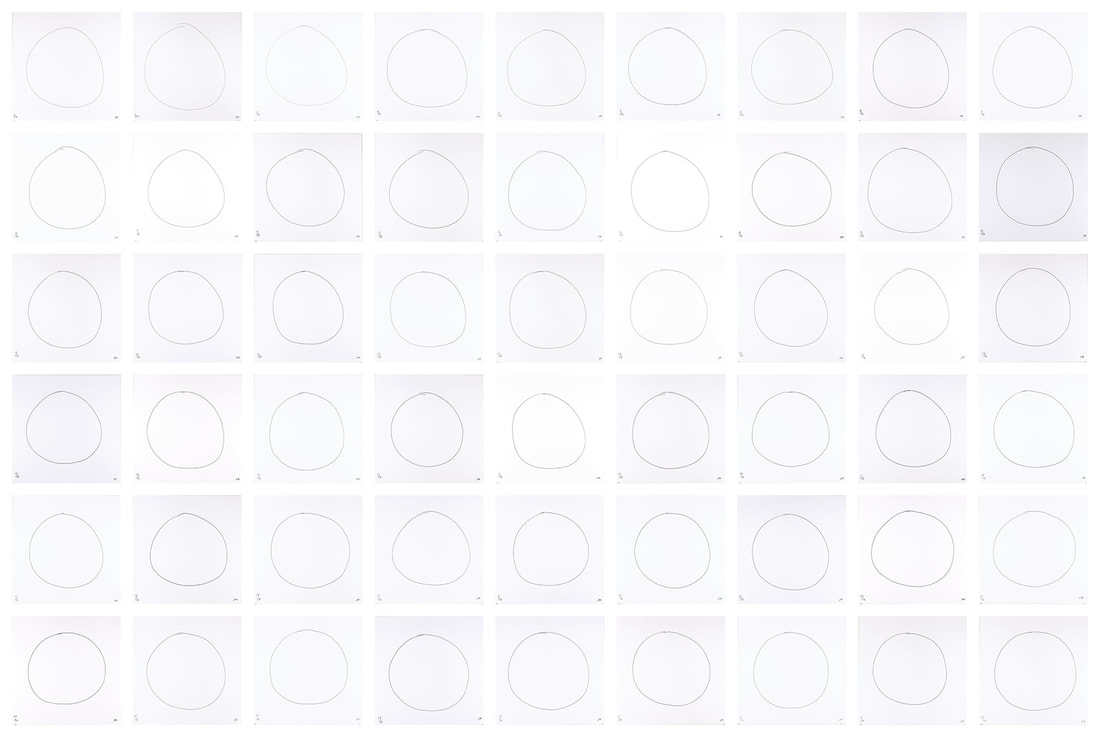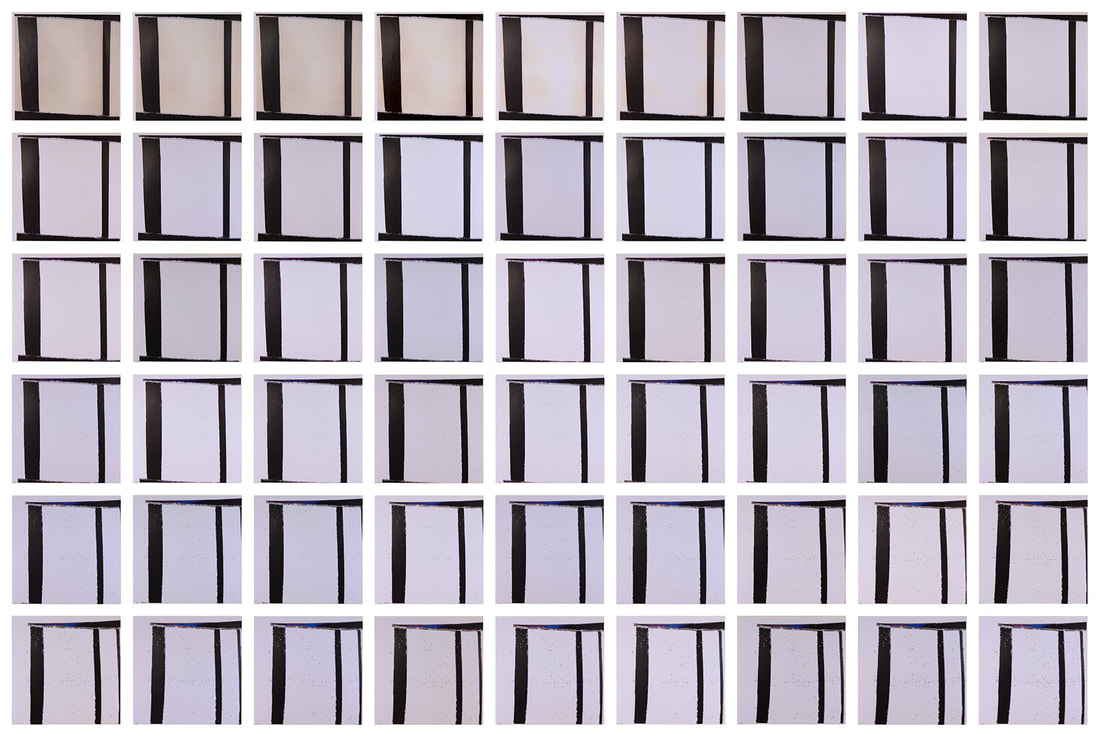A showcase of selected editions from the SWAP Editions archive
Camila Lobos < Edition 4 : BREX-kit >
'Broken landscapes' is an edition of landscape images printed on ceramic plates purchased from charity shops which have been shamed and reassembled as part of a performance. There is a plate to represent all 28 countries in the European Union, of which 18 have been selected for the Brex-kit.
'Broken landscapes' is an edition of landscape images printed on ceramic plates purchased from charity shops which have been shamed and reassembled as part of a performance. There is a plate to represent all 28 countries in the European Union, of which 18 have been selected for the Brex-kit.
Nadege Meriau < Edition 4 : BREX-kit >
[ IN-CONTINENT ] is an edition made of medium format rolls of film contact printed as a long narrow cyanotype and rolled up so that the sequence of images is visible inside a small antique glass bottle. This could be interpreted as an imagined message in a bottle from continental shores once England has Brexited. The photographs on the contact print refer to popular European delights.
[ IN-CONTINENT ] is an edition made of medium format rolls of film contact printed as a long narrow cyanotype and rolled up so that the sequence of images is visible inside a small antique glass bottle. This could be interpreted as an imagined message in a bottle from continental shores once England has Brexited. The photographs on the contact print refer to popular European delights.
Claire Undy < Edition 3 : ARTIST AS MACHINE >
'Coin Trick' is a dismantled flip book, printed on the pink pages of the Financial Times, deconstructing the classic ‘disappearing coin’ illusion. Once the frames of the moving image are separated, the sleight of hand is revealed, and the trick no longer functions. As still images, the gestures become abstract and incomprehensible- much like the workings of the stock markets the pages describe. By taking a small section of the work each, the owners of the flip book collectively stop it functioning.
'Coin Trick' is a dismantled flip book, printed on the pink pages of the Financial Times, deconstructing the classic ‘disappearing coin’ illusion. Once the frames of the moving image are separated, the sleight of hand is revealed, and the trick no longer functions. As still images, the gestures become abstract and incomprehensible- much like the workings of the stock markets the pages describe. By taking a small section of the work each, the owners of the flip book collectively stop it functioning.
James Moore < Edition 4 : BREX-kit >
Landscapes for the Metropolitan Elite are 18 small landscape oil paintings depicting icons of Europe, such as the Eiffel Tower, the Matterhorn, the Costa del Sol, the vineyards of Bordeaux, the Temple at Delphi etc.. The landscapes will serve as mementos of the pure beauty of Europe, a continent that will require hefty visa fee payments to visit in the future.
Landscapes for the Metropolitan Elite are 18 small landscape oil paintings depicting icons of Europe, such as the Eiffel Tower, the Matterhorn, the Costa del Sol, the vineyards of Bordeaux, the Temple at Delphi etc.. The landscapes will serve as mementos of the pure beauty of Europe, a continent that will require hefty visa fee payments to visit in the future.
James McGhee < Edition 3 : ARTIST AS MACHINE >
'After The News' began a few months before Swap with a conversation I had with a friend about both the sensationalist and dizzying nature of the news cycle, and how issues which I cared about were instantly devalued by the never ending tide of other such stories. If anything, this work was done to try and capture this drowning sensation – of both being unable to engage with news stories by their sheer quantity and the apathy and burnout which arises from trying. The work itself needed to be a challenge to produce and in doing so become a performative act – for this I settled on typewriting each edition. Working from 10,000 words worth of news headlines passed through Markov chains to generate a unique, random and mostly nonsensical body of text each time, I typed up 54 different pages on a partially broken 1930’s typewriter. This took around 20 hours to complete with each successive page becoming a test of physical and mental stamina due to both the maddening repetitive nature of the task and my hand cramping frequently from the stiffness of the keys; this resulted in the increase number of typing and mechanical errors in each successive edition.
'After The News' began a few months before Swap with a conversation I had with a friend about both the sensationalist and dizzying nature of the news cycle, and how issues which I cared about were instantly devalued by the never ending tide of other such stories. If anything, this work was done to try and capture this drowning sensation – of both being unable to engage with news stories by their sheer quantity and the apathy and burnout which arises from trying. The work itself needed to be a challenge to produce and in doing so become a performative act – for this I settled on typewriting each edition. Working from 10,000 words worth of news headlines passed through Markov chains to generate a unique, random and mostly nonsensical body of text each time, I typed up 54 different pages on a partially broken 1930’s typewriter. This took around 20 hours to complete with each successive page becoming a test of physical and mental stamina due to both the maddening repetitive nature of the task and my hand cramping frequently from the stiffness of the keys; this resulted in the increase number of typing and mechanical errors in each successive edition.
Oliver Martyn < Edition 3 : ARTIST AS MACHINE >
'Circle?' During a Culture Show interview between Mark Kermode and Jamie Hewlett, Hewlett is asked to discuss his major British influences. Surprisingly he admits that hearing Tony Hart flippantly remark that ‘if you could draw a perfect circle free hand then you were a true artist’ stuck with him for years. I later learnt that Giotto, the Italian Renaissance painter, had secured a major commission through supposedly being able to draw ‘perfect circles’ freehand. Through the flippant tone of Hart and the myth surrounding Giotto, I was able to have 54 attempts to become a ‘true artist’.
'Circle?' During a Culture Show interview between Mark Kermode and Jamie Hewlett, Hewlett is asked to discuss his major British influences. Surprisingly he admits that hearing Tony Hart flippantly remark that ‘if you could draw a perfect circle free hand then you were a true artist’ stuck with him for years. I later learnt that Giotto, the Italian Renaissance painter, had secured a major commission through supposedly being able to draw ‘perfect circles’ freehand. Through the flippant tone of Hart and the myth surrounding Giotto, I was able to have 54 attempts to become a ‘true artist’.
Sean Roy Parker < Edition 2 : Trade >
'Renegade Chutneys & Maverick Jams' - Is an edition of 18 jars of pickled or fermented foods either from business surplus or public land (foraged). Each jar contains a sealed gift (ceramic or plastic toy or beauty product etc) and the jars are wrapped in a custom label. All elements are found or stolen and repackaged as 'products', thus embodying capitalist notions of something from nothing.
'Renegade Chutneys & Maverick Jams' - Is an edition of 18 jars of pickled or fermented foods either from business surplus or public land (foraged). Each jar contains a sealed gift (ceramic or plastic toy or beauty product etc) and the jars are wrapped in a custom label. All elements are found or stolen and repackaged as 'products', thus embodying capitalist notions of something from nothing.
Bella Geldart < Edition 3 : ARTIST AS MACHINE >
'Indirect Architect' as an edition were all made as part of a performance, using a soft sculpture that I made as a mask. The sculpture consisted of a knife, fork and a spoon that I made with fleece and stuffing and sewed together. I made a cooked breakfast of baked beans, a fried egg and toast which I had on a plate beside me and with only the mask I would attempt to put some relic of the breakfast on the PVC, after which I would sew another bit on top trapping the food in between. I didn't have a particular pattern that I would follow, I would just try to put as much as I could in one go on to the fabric and make sure the spoon, the knife and the fork had all touched the food on each go and make sure they all touched the PVC. As a result of this all editions are unique, despite following a vague strategy.
'Indirect Architect' as an edition were all made as part of a performance, using a soft sculpture that I made as a mask. The sculpture consisted of a knife, fork and a spoon that I made with fleece and stuffing and sewed together. I made a cooked breakfast of baked beans, a fried egg and toast which I had on a plate beside me and with only the mask I would attempt to put some relic of the breakfast on the PVC, after which I would sew another bit on top trapping the food in between. I didn't have a particular pattern that I would follow, I would just try to put as much as I could in one go on to the fabric and make sure the spoon, the knife and the fork had all touched the food on each go and make sure they all touched the PVC. As a result of this all editions are unique, despite following a vague strategy.
Sebastian Coates < Edition 3 : ARTIST AS MACHINE >
'Photocopy' Artist as Machine. Machine as Artist. In an age where it increasingly feels like technology is taking over, I wanted to see what it had to say about my work. I took a painting that had been formed by a specific bit of piping in the studio and fed it through the photocopier. Full colour, A3. I then photocopied the photocopy, photocopied that photocopy and so on. Already after two photocopies the image had been completely simplified, the yellows of the raw canvas became white and the brushstrokes of the black oil paint became solid blocks. I thought a large edition suited this idea of a manipulation process and kind of revealed the photocopier exactly as that - a manipulation. By the 54th photocopy the pixels had taken over the original image and purples and blues had started to appear where there had been none. I wanted to use the photocopier as an instant form of photography, but exposing the distortion - the grey area.
'Photocopy' Artist as Machine. Machine as Artist. In an age where it increasingly feels like technology is taking over, I wanted to see what it had to say about my work. I took a painting that had been formed by a specific bit of piping in the studio and fed it through the photocopier. Full colour, A3. I then photocopied the photocopy, photocopied that photocopy and so on. Already after two photocopies the image had been completely simplified, the yellows of the raw canvas became white and the brushstrokes of the black oil paint became solid blocks. I thought a large edition suited this idea of a manipulation process and kind of revealed the photocopier exactly as that - a manipulation. By the 54th photocopy the pixels had taken over the original image and purples and blues had started to appear where there had been none. I wanted to use the photocopier as an instant form of photography, but exposing the distortion - the grey area.
Jack Holme < Edition 3 : ARTIST AS MACHINE >
In this series of 54 monoprints titled 'Don't Panic' I tried to blur and overlap three sets of images: the Falcon Heavy rocket launch; the massive water tower in Moon Township, near where I grew up; and things I associated with my dad. In a way, all three sets looked like monuments. I wanted to perform a very literal expedition, with the goal of accessing and recovering lost memories. The Moon – the 18th tarot card – was a recurring motif in my work long before I remembered that I used to play football in Moon Township every weekend. It just seemed to be an appropriate symbol for almost anything I wanted. The 18th card conventionally represents the liminal space, between two towers, where psychic and subconscious forces begin to touch reality. This series was all about gluing together strange associations. The Tesla roadster became my dad’s old car, the moon became a football, and it all became a sort of mad blueprint for a rocket launch, like the one at the beginning of Georges Méliès’s Trip to the Moon (1902). In every sense that a rocket launch should be high tech and awe-inspiring, this one was crude and naïve.
In this series of 54 monoprints titled 'Don't Panic' I tried to blur and overlap three sets of images: the Falcon Heavy rocket launch; the massive water tower in Moon Township, near where I grew up; and things I associated with my dad. In a way, all three sets looked like monuments. I wanted to perform a very literal expedition, with the goal of accessing and recovering lost memories. The Moon – the 18th tarot card – was a recurring motif in my work long before I remembered that I used to play football in Moon Township every weekend. It just seemed to be an appropriate symbol for almost anything I wanted. The 18th card conventionally represents the liminal space, between two towers, where psychic and subconscious forces begin to touch reality. This series was all about gluing together strange associations. The Tesla roadster became my dad’s old car, the moon became a football, and it all became a sort of mad blueprint for a rocket launch, like the one at the beginning of Georges Méliès’s Trip to the Moon (1902). In every sense that a rocket launch should be high tech and awe-inspiring, this one was crude and naïve.
Scarlet Griffith < Edition 3 : ARTIST AS MACHINE >
Repetitively feeding art canvas through a standard inkjet printer, my edition questions the permanence of industrial systems and the life spam of an image under the conditions of manufactured failure.
Repetitively feeding art canvas through a standard inkjet printer, my edition questions the permanence of industrial systems and the life spam of an image under the conditions of manufactured failure.
